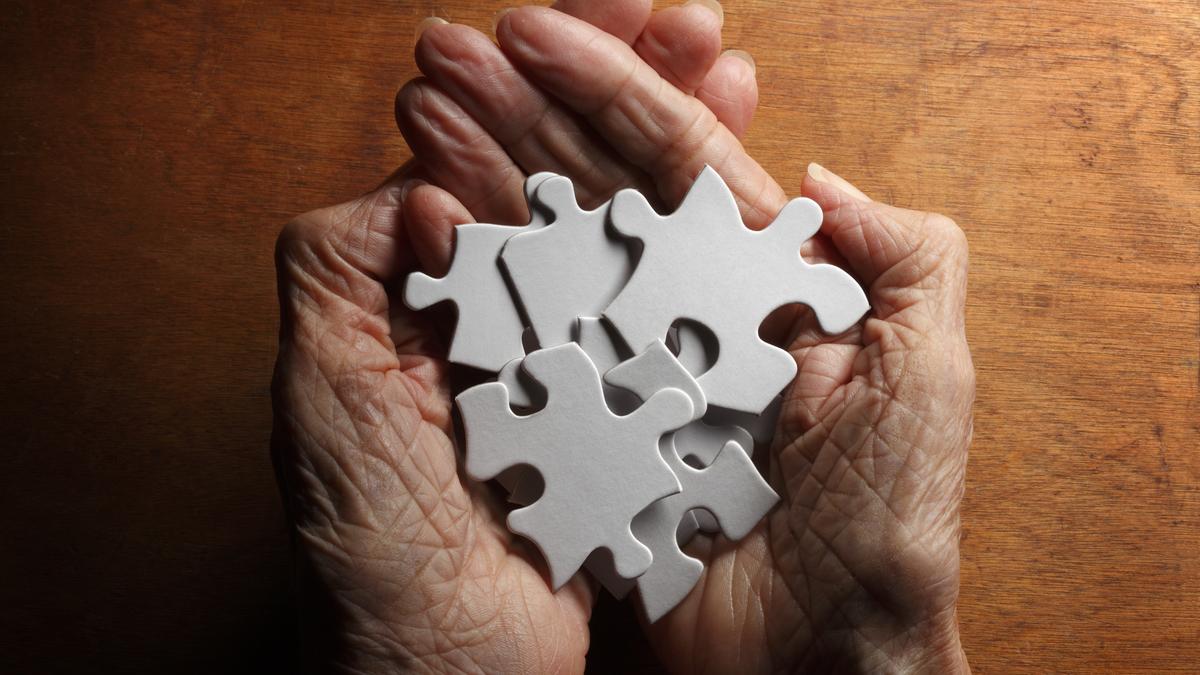
Many elderly people live by themselves. It is time to pause, talk to each other with eye contact and genuine interest.
| Photo Credit: Getty Images/iStockphoto
The color blue is associated with feeling low and also, at the other extreme, with exquisite beauty and a long healthy life. The term ‘once in a blue moon’ refers to transience and rarity, but blue sky and blue mountains give a sense of permanence and stability. There does appear to be something odd about this color and the different contexts in which it is used.
When I started watching birds during the Covid-induced isolation, the days would start with the kili kili calls of a blue bird, the white-throated kingfisher, perched prominently on buildings or poles. Birds with blue feathers display different shades depending on the angle of light falling on the bird. While red, yellow and black colors are caused by specific pigments, there is no naturally occurring blue pigment in fauna. Richard Prum, an American ornithologist is credited with having discovered a special structural arrangement of keratin in the feathers of birds that look blue. Keratin is also found in our hair and nails. When light falls on stacks of thin layers of keratin with pockets of air, the nano filaments absorb and cancel out all the colors of VIBGYOR, except the blue portion which gets reinforced and reflected. Blue color in the feathers of birds, on the face of Mandarin monkeys or the bottom of Vervet monkeys is a conjuring act of nature, a play of light, alluring and revealed quietly, without the aplomb of a magician. I picked up a peacock’s feather the other day, with the intention of studying it with my newfound knowledge on structural color. As I turned the feather, lo and behold! The back of it was a dull brown; reflection happening only from the surface!
Though a birdwatcher at heart, I am a cardiologist by training. The permanence and stability interpretation of the blue color highlights itself in my professional practice. I am concerned about the rising incidence of heart attacks and strokes, occurring frequently in middle age and snuffing out lives. A solution to curb the illness probably lies in the much talked-about Blue Zones, where many centenarians lead active and healthy lives and middle age mortality is very low. But blue has nothing to do with longevity. Scientists working on the project happened to mark five zones on a world map with blue ink and the name stuck! More than the etymology of blue zone, I wanted to know about the etiology of longevity in the study areas – Okinawa in Japan, Icaria in Greece, Sardinia in Italy, Nicoya in Costa Rica and Loma Linda in the USA. Common habits found in all the healthy senior citizens were: regular physical activity, stress-free attitude, strong family and social connections, plant-based diet and having a purpose in life. Conscious efforts are made to develop strong legs and a sharp mind. Moderation in food intake and stopping to eat when 80% full is practiced. They make it a point to relax with family and friends and enjoy community bonding and bonhomie.
I fondly remember going to the Shangumugam beach in Thiruvananthapuram with my grandfather. He would take long strides on the beach with his friends. At times my grandmother would take us to Padmanabhaswamy temple, where we would play and she would talk to other elderly women. Younger women of my mother’s age would meet up in the evenings for a chitchat and entertain themselves with singing. Now, many elderly people live by themselves. It is time to pause, talk to each other with eye contact and genuine interest.
All that we see as blue in birds is an optical illusion due to structural modification of tissues. The association of blue zones with longevity is mistaken. That need not stop us from marvelling at the magic of nature and creating our own zones for healthy living and meaningful longevity, in blue or in any other color.
Published – August 24, 2025 02:38 am IST
